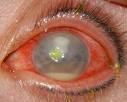The blog Drug and Device Law posted today on the Bausch & Lomb cases. The lawyers working the keyboards, Jim Beck and Mark Herrmann, do a good job with their blog, and it’s always interesting to read. That said, they are clearly defense lawyers, and have the accompanying defense biases (note to readers—I’m a plaintiff’s lawyer and have my own set of biases). And Beck’s firm defends Bausch & Lomb. So, I’d like to supplement their post.
Drug and Device Law discusses the Daubert/Frye hearing that a federal and state judge will conduct for a few days in New York to determine whether the Plaintiffs have sufficient causation evidence to link the contact lens solution to non-Fusarium infections. This is, of course, an appropriate way to handle those cases (and kudos to the judges involved for conserving resources and tag-teaming the hearing). The judges will decide if the scientific link is strong enough to permit the cases to go forward—this is just one way the system works to make sure only meritorious cases get to juries.
However, there were also lawsuits filed on behalf of people who suffered from the eye infection known as Fusarium keratitis. That’s a nasty little bug that can damage the cornea, and may require corneal transplants or even eye removal. The Drug and Device Law blog gives cursory mention of those lawsuits, noting that “Some of the MoistureLoc lawsuits were naturally filed on behalf of people who actually suffered from Fusarium keratitis.”

Well, “some” may not be the best word. Bausch & Lomb (note: BL was bought in 2013 by Valeant) has stated that it has settled “the vast majority of fungal infection cases.” The vast majority being approximately 600 cases, at a cost of over $250 million. That leaves about 500 lawsuits being challenged in the New York hearings. The point is, those 600 cases were meritorious. We’ll just have to wait and see about the other 500.
The other point of contention I have with the blog posting centers around this statement:
Bausch & Lomb conducted a massive study and concluded that, under certain conditions simulating consumer noncompliance with the package insert, MoistureLoc could allow the formation of a polymer film on a contact lens that permitted some strains of Fusarium to survive and thrive despite later disinfection with MoistureLoc.
(Emphasis added). The problem is, drug companies frequently try to defend cases based on noncompliance. We addressed this with the Denture Cream post a few days ago. The issue is really whether that “noncompliance” is foreseeable, i.e., do consumers regularly misuse the product in an expected way? The second part of that issue that consumers were never warned about the consequences of misuse—if Bausch & Lomb had a warning on their package saying users could lose their eye if they didn’t follow directions, people would have followed instructions to the letter. This defense just doesn’t hold any water. And the company settled those cases, anyway, which shows that they knew it couldn’t carry the day.
 Lawsuit Update Center
Lawsuit Update Center

